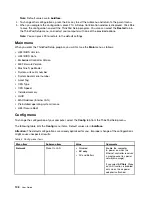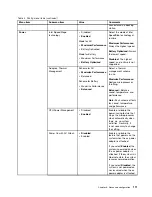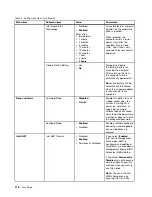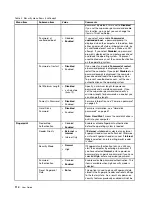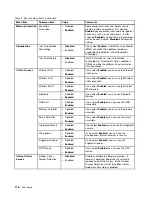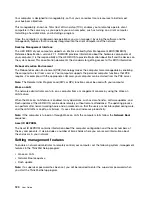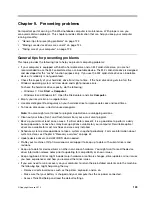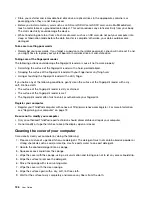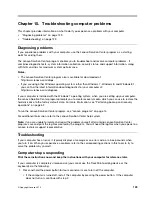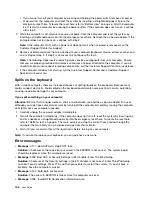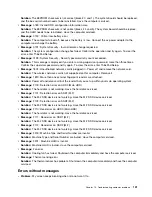
Your computer is designed for manageability, so that you can redirect more resources to better meet
your business objectives.
This manageability, known as Total Cost of Ownership (TCO), enables you to remotely operate client
computers in the same way as you operate your own computer, such as turning on a client computer,
formatting a hard disk drive, and installing a program.
Once the computer is configured and operational, you can manage it by using the software and the
manageability features that are already integrated into the client computer and the network.
Desktop Management Interface
The UEFI BIOS of your computer supports an interface called System Management BIOS (SMBIOS)
Reference Specification, version 2.7.1. SMBIOS provides information about the hardware components of
your computer. It is the responsibility of the UEFI BIOS to provide information about itself and the devices on
the system board. This specification documents the standards for getting access to this BIOS information.
Preboot eXecution Environment
The Preboot eXecution Environment (PXE) technology makes the computer more manageable by enabling
the computer to start from a server. Your computer supports the personal computer functions that PXE
requires. For example, with the appropriate LAN card, your computer can be started from the PXE server.
Note:
The Remote Initial Program Load (RIPL or RPL) function cannot be used with your computer.
Wake on LAN
The network administrator can turn on a computer from a management console by using the Wake on
LAN feature.
When the Wake on LAN feature is enabled, many operations, such as data transfer, software updates, and
Flash updates of the UEFI BIOS, can be done remotely without remote attendance. The updating process
can perform after normal working hours and on weekends, so that the users are not interrupted during work,
and the LAN traffic is kept to a minimum. It saves time and increases productivity.
Note:
If the computer is turned on through Wake on LAN, the computer starts follow the
Network Boot
sequence.
Asset ID EEPROM
The Asset ID EEPROM contains information about the computer configuration and the serial numbers of
the key components. It also includes a number of blank fields where you can record information about
the end users in your network.
Setting management features
To enable a network administrator to remotely control your computer, set the following system-management
features in the ThinkPad Setup program:
• Wake on LAN
• Network Boot sequence
• Flash update
Note:
If a supervisor password has been set, you will be required to enter the supervisor password when
you start the ThinkPad Setup program.
120
User Guide
Содержание Thinkpad T440
Страница 1: ...User Guide ThinkPad T440 ...
Страница 6: ...iv User Guide ...
Страница 16: ...xiv User Guide ...
Страница 76: ...60 User Guide ...
Страница 86: ...70 User Guide ...
Страница 110: ...94 User Guide ...
Страница 120: ...104 User Guide ...
Страница 138: ...122 User Guide ...
Страница 144: ...128 User Guide ...
Страница 160: ...144 User Guide ...
Страница 164: ...148 User Guide ...
Страница 170: ...154 User Guide ...
Страница 174: ...158 User Guide ...
Страница 176: ...Ukraine RoHS 160 User Guide ...
Страница 181: ......
Страница 182: ......
Страница 183: ......



